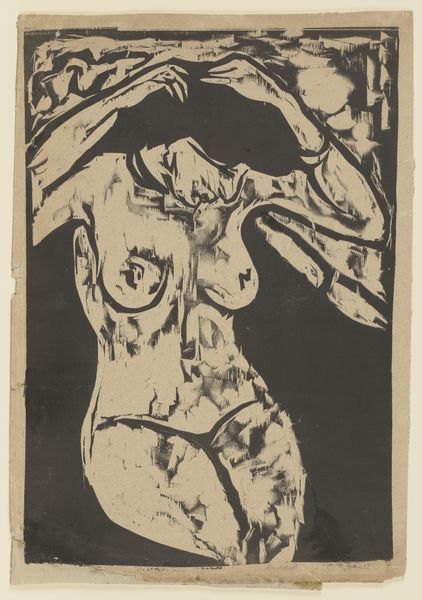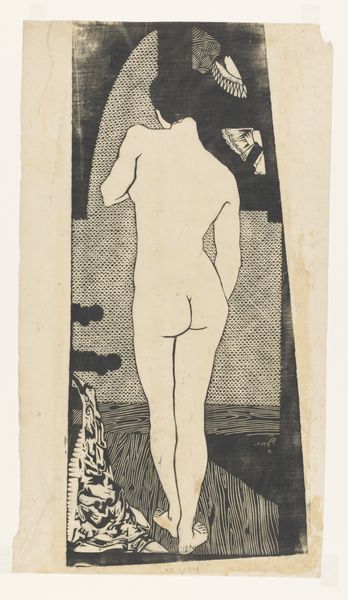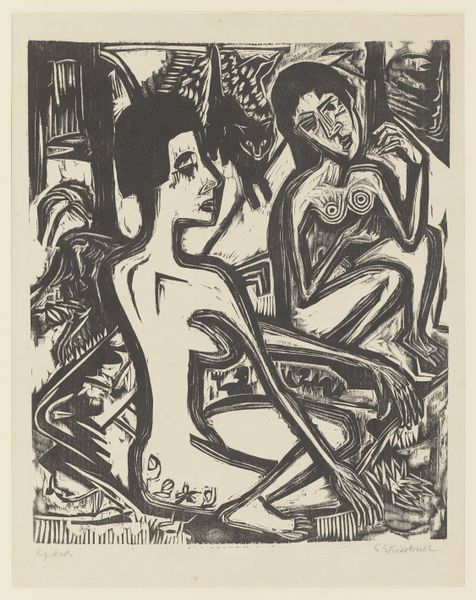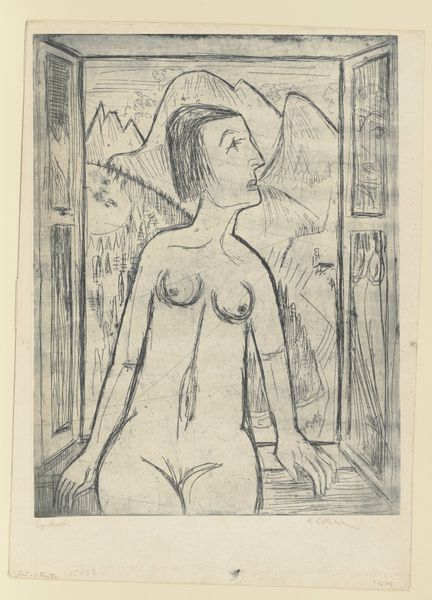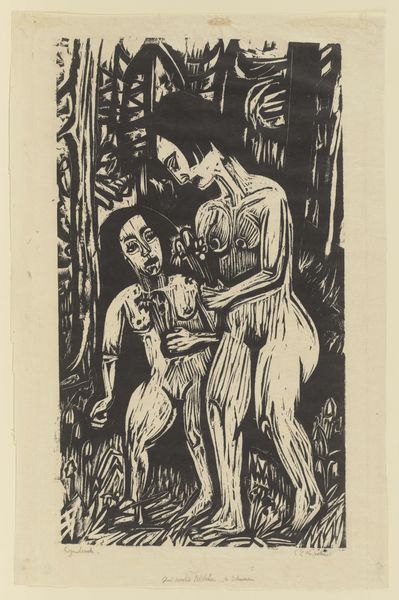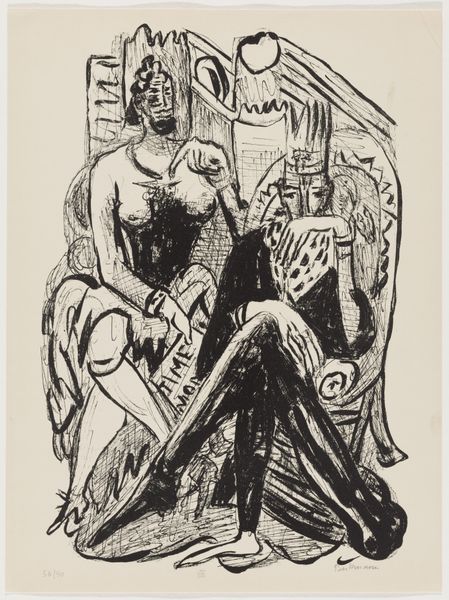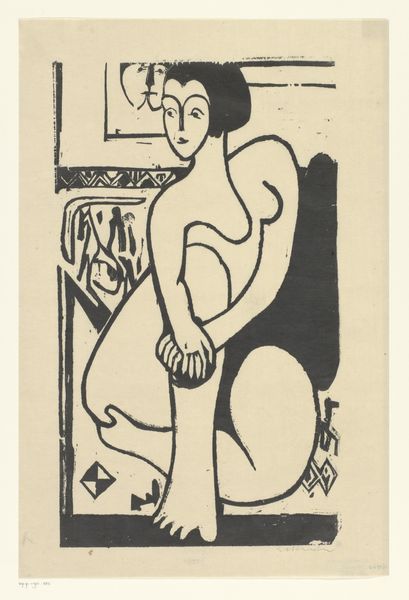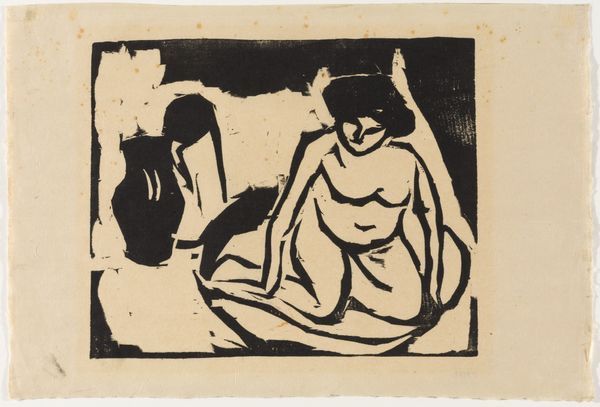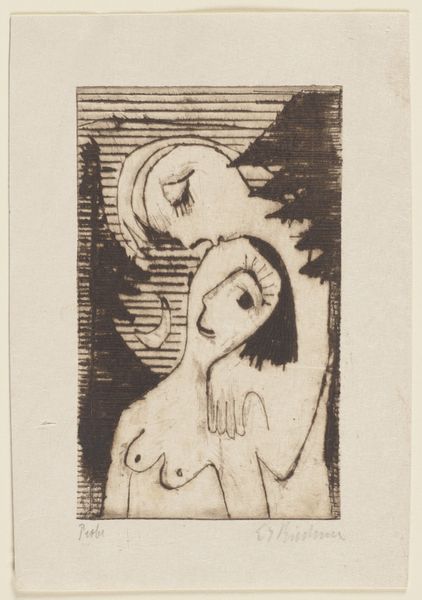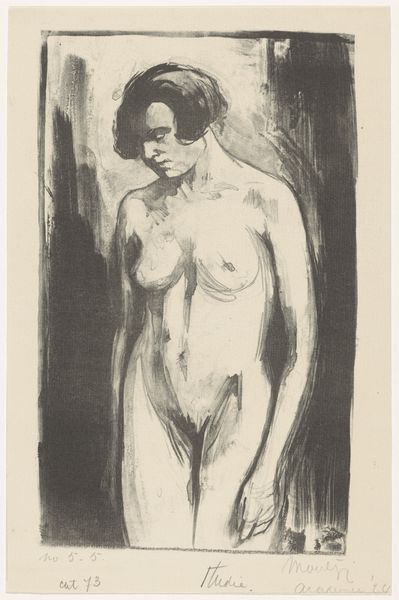
Mädchenakt mit Selbstbildnis. – Nacktes Mädchen mit Kette 1903
0:00
0:00
drawing, print, paper, woodcut
#
portrait
#
17_20th-century
#
drawing
#
self-portrait
# print
#
german-expressionism
#
figuration
#
paper
#
german
#
linocut print
#
ink drawing experimentation
#
expressionism
#
woodcut
#
nude
Copyright: Public Domain
Curator: Ernst Ludwig Kirchner's 1903 woodcut and linocut print, "Mädchenakt mit Selbstbildnis. – Nacktes Mädchen mit Kette" or "Female Nude with Self-Portrait – Nude Girl with Necklace", offers us an early glimpse into his evolving style. Editor: Stark. The immediate impression is the severity of the black and white contrast. There's a raw, almost aggressive quality to the lines and the gaze of the figures. Curator: It's fascinating to see Kirchner experimenting with the linocut medium, particularly this blend with woodcut. The textures he achieves through the carving and printing processes reflect his desire to move beyond traditional art academy practices. We should take note that Kirchner was working during a time when artists challenged notions around the 'fine' art of painting in oil and the 'applied' nature of woodcuts as craftwork. Editor: And the symbolism within the image seems charged. The necklace on the female figure and the almost mask-like self-portrait in the background—what do these suggest to you? It's like the artist is exploring ideas of identity and self-perception. Is the female nude representative of beauty, and how does he, the artist, situate himself in relation to that beauty? Curator: The use of bold lines and stark contrast definitely aligns with the aesthetics of the Die Brücke movement that Kirchner would later co-found. One can really observe the connection with materiality here – it's clear how he's pushing against conventional printmaking. The surface of the wood and linoleum aren’t hidden; they are actively employed. The act of carving becomes paramount in understanding Kirchner's approach to his subjects. Editor: Perhaps the act of self-portraiture becomes almost performative in that sense. By placing himself next to the nude, in such a direct, graphic way, he's inserting himself into a narrative. The symbol of the nude is complex: it's simultaneously classical and sexualised, and by contrasting that image with the likeness of himself, he's revealing vulnerability as well as assertion. Curator: That tension you highlight—vulnerability and assertion—is precisely what makes this work so potent. Seeing his bold manipulation of material processes contextualized alongside his early Expressionist aesthetic offers insightful entry point into the artist’s body of work. Editor: It offers a glimpse into the artist's evolving self-awareness and perhaps sets the stage for future deconstruction of identity in Kirchner’s expressionist practice.
Comments
No comments
Be the first to comment and join the conversation on the ultimate creative platform.
